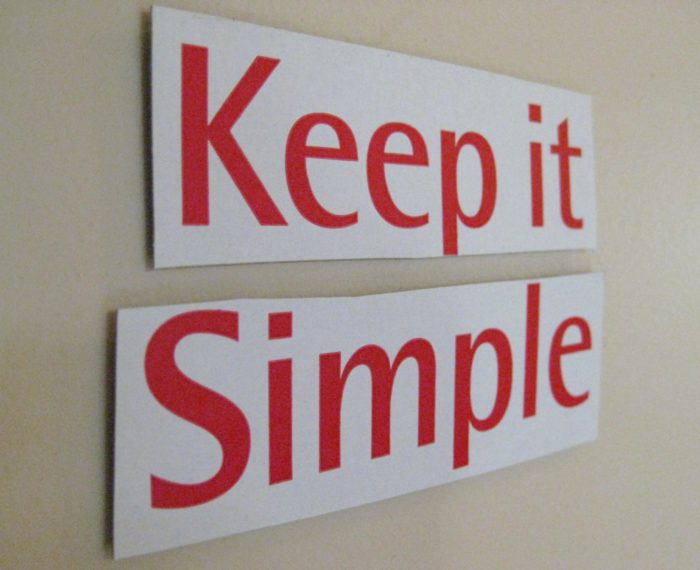The real challenge of engineering is making good decisions especially when we don’t have all the data.
Here are several keys to making a low stress decision:
- Have a clear objective
- Set a short time limit
- Limit the number of decisions you make
- Don’t make the same decision twice
- Know when to bring someone else into the decision
- Don’t overthink the problem
- Choose the simpler solution
- Commit now, but decide later
- Use a decision matrix
- Sleep on it
- Pick at random
- Embrace Failure
Yes, as an engineer, you will make lots of decisions every day. Most of these decisions are quick and easy so we won’t discuss those here. Our education has taught us a lot of knowledge and analysis techniques. Sometimes those tools lead us directly to a solution, but many times, there are two or more equally good solutions. This is where experience and wisdom come into play.
In the engineering world, we are definitely caught between being the first to the market and having a quality product from the start. Poor quality can be improved upon, but there are cases where extremely poor quality has given that market a black eye. One example that comes to mind is the use of fiber optic controls on outdoor equipment in the late 1980s. The quality of the system was so poor that fiber optics were pretty much a four letter word until all those familiar with it retired. In the meantime, computers and other related technology made significant strides, but still could not be used in this market.
I’ll be honest, there are times when I don’t want to make a decision, but it needs to be made.
Let’s explore each of these items.
1. Have a clear objective
This by far is the most important step in making a decision. The better you can describe what the ideal solution is the easier your decision will be. If you have no idea what a good or bad idea looks like, you will never get close to making a decision. Spend time analyzing exactly what works in similar designs as well as what won’t work and be very specific. Come up with a list of important criteria and set weights to them.
Typical criteria are:
- Effectiveness
- Robustness
- Simplicity
- Cost
- Time to implement
One part of an objective that is often overlooked is how the solutions line up with your company’s values or mission statement. Be sure to consider this with every decision.

2. Set a time limit
First off, this is more for little decisions although having a time limit of something like, “I will decide this by the end of the week”, will work as well. Having a time limit prevents you from procrastinating or spending too much time on small details.
If you are like me, I hate it when I come back from vacation and there are now 200 emails that I need to sort through. This is precisely where the timer comes into play. I will look through each email for 15 to 30 seconds at most. If the item can be completed in that time or added to a list etc., I do it. Then the email is archived or deleted. If it requires more time, I mark it as unread and leave it alone.
In about 30 minutes, I could get through all 200 emails and be left with around 20 to 40. I would then repeat the process and give somewhere between two and five minutes for each email. This generally left me with usually 1 to 5 emails that would take a considerable amount of time to handle. On average, I think that I could handle the overwhelming majority of emails in 90 minutes.
3. Limit the number of decisions you make
Honestly, we all make too many decisions every day. I once saw a number of 35,000 which makes sense, but wow – that’s a lot! Luckily, the vast majority are very minor and can be ignored. However, if you are continually making many large decisions each day, this will likely lead to fatigue.
If this is the case, you need some help. If you have the ability to delegate, do so. If the person you can delegate to isn’t qualified to make a decision, have them do research so your decision is easier. If you can’t delegate, talk to your boss. He or she may be able to help.
4. Don’t make the same decision twice
This one is a sneaky son of a gun. I you have decided on a matter, but haven’t committed to it, you are going to keep rethinking the decision until you do. This is the very definition of stress. Once decided, lock it in immediately and forget the other options.
5. Know when to bring someone else into the decision
This is easy, but often overlooked. Make sure that you have a trusted group of advisors that you can bounce ideas off of. They don’t even have to be engineers, in fact sometimes it is better if they aren’t.
Let me explain. New and untrained eyes on the problem will force you to explain the problem in great detail and how each potential solution addresses solves the problem. There have been multiple times where just in explaining the problem to someone else, the solution presented itself.
6. Don’t overthink the problem
Paralysis by analysis is a real thing. Sorting out what data is important or not is imperative. Often time having less data is more helpful in making a decision. In general, engineers want to be 100% confident that our solution will work, but that is never the case. We can always run more tests, try other solutions and consider more variables, but we are just prolonging the decision. Know when you have enough information to make a decision.

7. Choose the simpler solution
Yes, if you have two solutions that are pretty much equal, choose the simpler one. In my experience, there is less that can go wrong with simplicity. I know the adage of the engineer is “if it isn’t broke, it doesn’t have enough features,” but not everything needs to have every feature. I prefer “not broke” over features every day.
8. Commit now, but decide later
This is an interesting approach that I was just made aware of recently. Make no mistake, this is not procrastinating, but rather a method of getting you in the habit of making quicker decisions without the fear of regret.
It works like this: your boss asks if you have decided whether Solution A or Solution B is the way to go. Solution B is clearly the better choice, so you say we should proceed with that. However, you also add that you would like to run a quick test on Solution B to confirm that it is the best choice.
What you have done is instill confidence in your decision to your boss, but left an ‘out’ in case the test fails. We do this when buying a home where we put a little money down at the offer, but we can back out after we run our tests, namely a home inspection, before we close. There is tremendous benefit in expressing commitment, but deciding later.
I will caution you that your test should be brief when compared to the decision timeline. Otherwise, you are just procrastinating.
9. Use a decision matrix
A decision matrix is a tool that allows you to visibly weigh multiple criteria against multiple potential solutions. This is done by assigning certain weights and values for each solution against those weighted criteria. When done right, either by yourself or with a group, certain solutions will come to the front and others will retreat.
However, if you have one option that scores slightly higher than another, it doesn’t necessarily mean that it is better. This is a tool and it still needs interpretation by you, a qualified engineer.

10. Sleep on it
Ok, this also is not procrastination as long as you set a time limit. Our brains are amazing computers, but we need time and often a change of scenery to process the decision. Sleep and “windshield time,” (the time spent driving to and from work looking through a windshield) are miracle workers when it comes to clearing out your brain and making good decisions.
11. Pick at random
Yes, it seems ridiculous, but if all the solutions are equal, pick a solution at random. Write the option on sticky notes and pick them from a hat.
12. Embrace the Fear of Failure
We knew this one was coming. Yeah, we are all going to make a bad decision and some of them will be big ones. Notice the title says, “the FEAR of Failure,” and not failure itself. Failure is not eminent! This is often the cause of dragging our feet or not making a decision at all.
Personally, I have a goal to fail for one reason. When you fail you tend to learn more, after all, you will learn more from one failure than from a thousand successes.
Engineering disasters like the failure of the Tacoma Narrows Bridge or the oil spill from the Exxon Valdez taught us far more than a hundred good bridges or oil transport successes. My point is that failures are something we learn from and we should not put off making decisions because of fear. Failure will occur, give it a big hug and learn from it.




